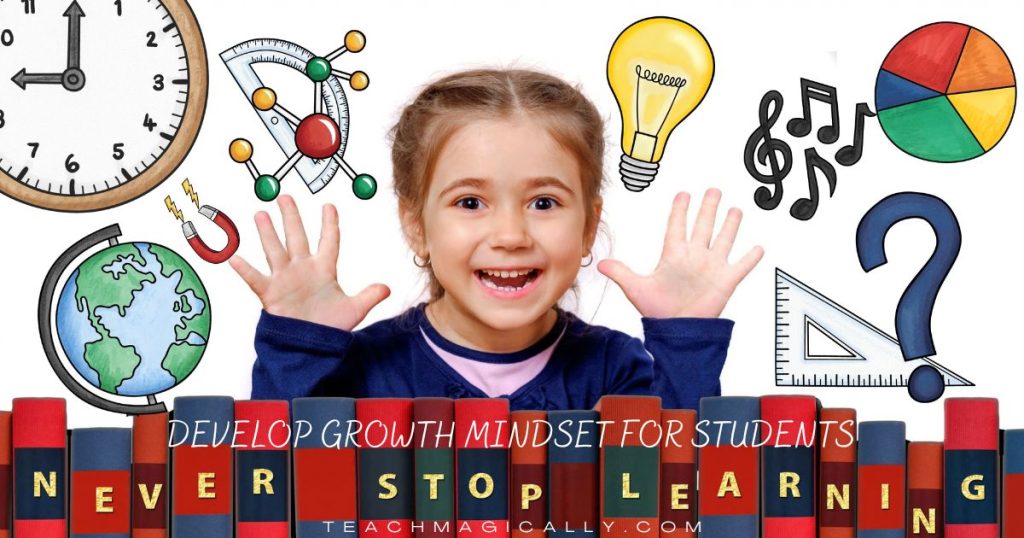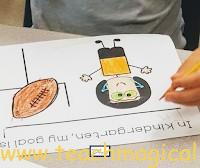
Developing a growth mindset in kindergarten students is an important foundation for their lifelong learning and development. A growth mindset encourages children to believe that their abilities and intelligence can be developed through effort, learning, and perseverance.
How we know mindset is a critical component of success for students
There is quantitative research to back this up. Stanford psychologist Carol Dweck examined mindsets among young students. She found that children who have a growth mindset that intelligence can be developed are better able to overcome academic challenges than those who have a fixed mindset that intelligence is predetermined.
Strategies to foster a growth mindset in students
2.Praise Effort and Persistence: Instead of solely praising innate abilities or intelligence, focus on praising the effort, strategies, and perseverance that kiddos put into their work. For example, say, “I can see how hard you worked on that!” or “I noticed you kept trying even when it was challenging!”
3.Normalize Mistakes: Help kiddos understand that making mistakes is a natural part of learning. Encourage them to see mistakes as opportunities to learn and grow. Share stories about famous individuals who faced failures but persevered to achieve success.
4.Teach the Brain’s Plasticity: In simple terms, explain to kiddos that their brains are like muscles that can grow stronger with practice. Use relatable examples like how learning to ride a bike was hard at first but became easier with practice.
5.Use Growth Mindset Language: Incorporate growth mindset phrases into your conversations with kiddos. Phrases like “I haven’t mastered this yet,” “I can improve with practice,” and “Mistakes help me learn” can help them develop a positive mindset towards challenges.
6.Encourage Goal Setting: Help kiddos set achievable goals and break them down into smaller steps. Celebrate their progress along the way, emphasizing that progress is more important than achieving a perfect outcome.
7.Provide Constructive Feedback: When giving feedback, focus on specific aspects of the child’s work or effort. Offer suggestions for improvement rather than only pointing out what’s wrong. This helps them see that improvement is possible.

More Strategies for Growth Mindset
8.Read Stories: Share stories, books, or videos that highlight characters who faced challenges and worked hard to overcome them. Discuss the characters’ growth mindset and how it helped them succeed. Check out Best Goal Setting Books with videos from YouTube.
9.Create a Safe Learning Environment: Ensure that your classroom is a safe space where kiddos feel comfortable taking risks and asking questions. Encourage peer support and collaboration, so children understand that everyone is on a learning journey.
10.Engage in Growth Mindset Activities: Incorporate activities that promote a growth mindset, such as problem-solving games, puzzles, and projects that require critical thinking and perseverance. Check out 2 ways to help struggling students.
11.Encourage Reflection: Help kiddos reflect on their learning experiences. Ask questions like, “What did you learn from this activity?” or “How did you feel when you faced a challenge?”
12.Avoid Labels: Avoid labeling kiddos as “smart” or “not smart.” Such labels can limit their perception of their abilities. Instead, focus on their efforts and growth.
Remember that developing a growth mindset takes time, consistency, and patience. School is a crucial time to start cultivating these attitudes, as they lay the foundation for a child’s approach to learning and challenges throughout their academic journey and beyond.
Teach Magically,
💖Debora




